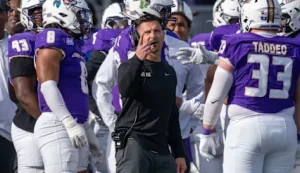New Yorker: The Haditha Massacre Photos That the US Marine Corps Didn’t Want the World to See
On the morning of November 19, 2005, a squad of Marines was travelling in four Humvees down a road in the town of Haditha, Iraq, when their convoy hit an I.E.D. The blast killed one Marine, Lance Corporal Miguel Terrazas, and injured two others. What followed would spark one of the largest war-crime investigations in the history of the United States.
During the next several hours, Marines killed twenty-four Iraqi men, women, and children. Near the site of the explosion, they shot five men who had been driving to a college in Baghdad. They entered three nearby homes and killed nearly everyone inside. The youngest victim was a three-year-old girl. The oldest was a seventy-six-year-old man. The Marines would later claim that they were fighting insurgents that day, but the dead were all civilians.
After the killing was over, two other Marines set off to document the aftermath. Lance Corporal Ryan Briones brought his Olympus digital camera. Lance Corporal Andrew Wright had a red Sharpie marker.
Briones and Wright went from site to site, marking bodies with numbers and then photographing them. Other Marines, including one who worked in intelligence, also photographed the scene. By the time they were done, they had made a collection of photographs that would be the most powerful evidence against their fellow-Marines.
This project is supported by the Pulitzer Center.
The killings came to be known as the Haditha massacre. Four Marines were charged with murder, but those charges were later dropped. General James Mattis, who went on to become Secretary of Defense, wrote a glowing letter to one of the Marines, dismissing his charges and declaring him innocent. By 2012, when the final case ended in a plea deal with no prison sentence, the Iraq War was over, and stories about the legacy of the U.S. occupation rarely got much attention. The news barely registered.
The impact of an alleged war crime is often directly related to the horror of the images that end up in the hands of the public. The abuse of detainees at Abu Ghraib prison became an international scandal when graphic photos were published. The Haditha killings had no similar moment. A few of the images that the Marines had made ended up in the public domain, but most have never been released.
In an oral-history interview for the Marine Corps, in 2014, General Michael Hagee, who was the commandant of the Marine Corps at the time of the Haditha killings, bragged about keeping the Haditha photos secret.
“The press never got them, unlike Abu Ghraib,” Hagee said.
The interviewer, Fred Allison, a Marine Corps historian, interjected, “The pictures. They got the pictures. That was what was so bad about Abu Ghraib.”
“Yes,” Hagee replied. “And I learned from that.” He said, “Those pictures today have still not been seen. And so, I’m quite proud of that.”
In 2020, our reporting team at the In the Dark podcast filed a Freedom of Information Act request with the Navy, seeking records that included the photos. We thought that the photos would help us reconstruct what happened that day—and why the military had dropped murder charges against the Marines involved. The Navy released nothing in response. We then sued the Navy, the Marine Corps, and U.S. Central Command to force them to turn over the photos and other records related to the Haditha killings. We anticipated that the government would claim that the release of the photos would harm the surviving family members of the dead. Military prosecutors had already made this argument after the trial of the final accused Marine.
While we were fighting with the military to get the photos, a colleague and I travelled to Iraq to meet with family members of the victims of the killings. They recounted what had happened on November 19, 2005, and their efforts to seek justice, all of which had failed. “I believe this is our duty to tell the truth,” Khalid Salman Raseef, a lawyer who lost fifteen members of his family that day, told me. Another man, Khalid Jamal, was fourteen when his father and his uncles were killed. He told me that he’d spent years wondering what happened in his family members’ final moments. “Did they die like brave men? Were they scared?” he said. “I want to know the details.”
We asked the two men if they would help us obtain the photos of their dead family members. They agreed, and we entered into an unusual collaboration—an American journalist and two Iraqi men whose family members had been killed, working together to pry loose the military’s secrets.
I worked with the lawyers representing us in our lawsuits against the military to draft a form that the surviving family members could sign, indicating that they wanted us to have the photos. Raseef and Jamal offered to take the form to the other family members.
The two men went house to house in Haditha, explaining our reporting and what we were trying to do.
At one house, Jamal told the father of one of the men who was killed while trying to get to Baghdad, “Of course, I am one of you.” Jamal asked him to sign the form, saying, “Things that happened in the massacre will be exposed.” The father, Hameed Fleh Hassan, told him, “The drowning man will cling to the straw. . . . We sign. We sign. I will sign it twice, not once.”
Raseef and Jamal collected seventeen signatures. Our attorney filed the form in court as part of our lawsuit. In March, more than four years after our initial FOIA request, the military relented, and gave us the photos.
The New Yorker has decided to publish a selection of these photos, with the permission of the surviving family members of those depicted, to reveal the horror of a killing that the military chose not to punish.
The photos are graphic. They show men, women, and young children in defenseless positions, many of them shot in the head at relatively close range.










A five-year-old girl, Zainab Younis Salim, was shot in the head by a U.S. Marine. Zainab died in a bed next to her mother, sisters, and brother. A Marine scrawled the number eleven on her back with a red Sharpie marker after the killings, to differentiate the dead in photos.
A mother, Ayda Yassin Ahmed, who was forty years old, surrounded by her dead children in the family’s bedroom. Everyone on the bed was shot and killed by U.S. Marines. From left to right: Sabaa, ten years old; Ayesha, three; Zainab (in the foreground), five; Mohammed, eight; and Ayda. The sole survivor was an eleven-year-old girl, Safa, who hid in a corner next to the bed during the shooting.
According to Naval Criminal Investigative Service records, one of the Marines, Lance Corporal Stephen Tatum, told investigators that before he began shooting, he recognized that the people in the room were women and children. Tatum described seeing a child with short hair standing on the bed. “Knowing it was a kid, I still shot him,” Tatum said. (Tatum later denied making this statement.)
Three-year-old Ayesha Younis Salim was shot to death. A Marine wrote the number twelve on her cheek after she was killed. To the left is her sister Sabaa, who was ten, and to the right is her brother, Mohammed, who was eight. The outstretched arm of her sister Zainab, five, is nearly touching Ayesha’s hand.
Fifteen-year-old Noor Younis Salim, next to the bed where her mother and four of her siblings were killed. Noor’s surviving sister, Safa, told The New Yorker that she and Noor had hidden behind the bed, but that a Marine had aimed his rifle under the bed and fired at them. The Marine missed Safa, but Noor was killed.
The bedroom where Ayda, her sister, and five of her children were killed. The photo was taken after the bodies and the mattress had been removed.
The hallway of Safa’s family’s home. The blood streaks on the floor were likely caused by Marines dragging the bodies of her family outside, hours after the killings. The Marines loaded the bodies into Humvees and drove them to the Haditha hospital. The room at the back right of the hallway is the bedroom where Marines killed five of Safa’s siblings; their mother, Ayda; and their aunt—most of whom were huddled together on a bed.
A mother, Asmaa Salman Raseef, thirty-two, and her four-year-old son, Abdullah, lie dead in the corner of their living room. Asmaa’s arm is around her son, perhaps in a final attempt to protect him. Asmaa appears to be injured in the upper back. Abdullah was determined by military investigators to have a bullet wound in his head. N.C.I.S. investigators concluded that the Marine who shot Abdullah was likely standing less than six feet away.
A wider view of the living room where Marines killed Asmaa, her son Abdullah, and two other family members. The body of Jaheed Abdul Hameed Hassan, forty-three, is against the wall in the foreground. A military medical examiner concluded that Jaheed was likely lying down or sitting against the wall when he was shot. Behind him, in the corner of the room, are the bodies of Asmaa and Abdullah. Marines took this photo after moving Abdullah’s body. As a result, in this image, his mother’s arm is no longer over his back.
The arm of Khomeisa Tuma Ali, sixty-six, who was killed in the hallway of the first house the Marines entered. In an interview with military investigators, Corporal Hector Salinas admitted to shooting and killing her, though he said he did not realize that she was a woman. “All I could see of the person running in the hallway was their side and part of their back,” Salinas told N.C.I.S. “I could not identify age, gender, or if the person was armed.” Marines in Haditha were required to identify whether targets were enemies before shooting them. Salinas told N.C.I.S. that he shot because he thought that gunfire had been coming from the area. No weapons were found inside the house, and a military investigation determined that the dead were civilians. (Salinas called all allegations against him “false.”)
The first five people who were killed that day by the Marines. The five men had been driving to a college in Baghdad in a white car down the same road as the Marines’ convoy. Before the convoy was struck by an I.E.D., the Marines pulled the car over. After the explosion, all five were shot to death.
The driver of the car was Ahmed Fanar Muslih, twenty-nine. The passengers were Wajdi Ayad Abdulhussein, nineteen; Akram Hameed Fleh, nineteen; Khalid Ayad Abdulhussein, twenty-six; and Mohammed Battal Ahmed, twenty-one.
Some of the Marines claimed that the men were running away when they were shot, but the photo contradicts this, showing that the men were shot next to the car. One of the men was found on his back with his legs tucked under him, suggesting that he could have been kneeling when he was shot. Marines searched the bodies and the car and found no weapons. (The military obscured the face of a service member with a white box.)


